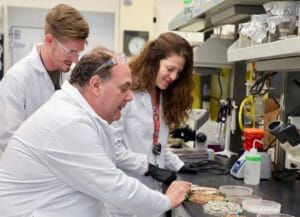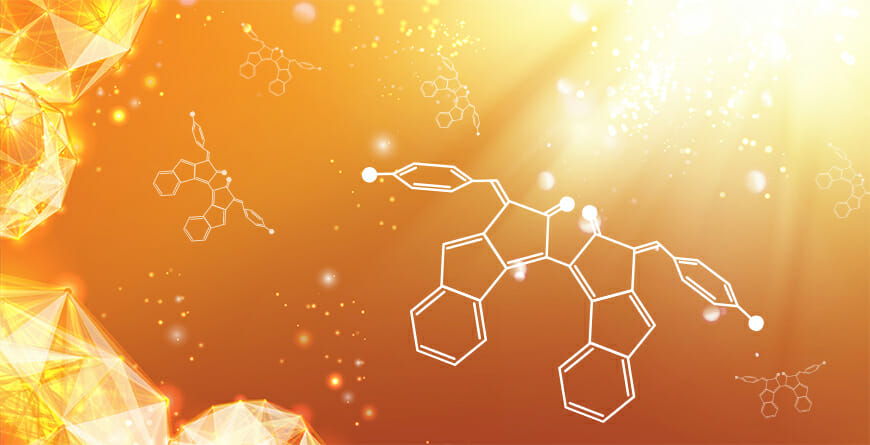
Have you ever wondered what Earth was like in its distant past? It was indeed very different from today. For one, the atmosphere contained no oxygen, so none of us would have survived it. This all changed when cyanobacteria arose – microbes that release oxygen from photosynthesis. Over an incredibly long period of time, the cyanobacteria continued to release oxygen, and little by little, it changed the Earth’s chemistry. They first oxidized the Earth’s minerals, and oceans -- and, then the atmosphere began to accumulate oxygen.
Scientists, however, do not know exactly when cyanobacteria evolved, though most believe that according to the rock record, oxygen began to accumulate some 2,400 to 2,200 million years ago. For comparison, the human lineage is only 5 to 7 million years old.
Now, Ferran Garcia-Pichel, director of Biodesign Center for Fundamental and Applied Microbiomics, and a professor in the School of Life Sciences, has discovered that the dynamics of atmosphere oxygen on Earth have been recorded in the evolution of the genes in a “sunscreen molecule.” The molecule is called scytonemin (sci-toh-nuh-min). Scytonemin is a highly efficient protective biomolecule used in sunscreens.
In his paper, “Timing the evolutionary advent of cyanobacteria and the later great oxidation event using gene phylogenies of a sunscreen,” published in May in the American Society of Microbiology’s open access journal, MBio. Garcia-Pichel and his team have used purely biological methods to determine when and how Earth became an oxygen rich environment; referred to as “the Great Oxygenation Event”– arguably the single most significant environmental change for living organisms yet to have taken place.
“In my lab, we don't shy away from using different methods,” he said. “We tend to follow the questions and use whatever discipline is necessary to find out the answers instead. And, who knew that asking a simple question about one molecule would teach us something the history of Earth?”
Scytonemin is a light-absorbing molecule that cyanobacteria produce to protect themselves from ultraviolet A radiation. Cyanobacteria are photosynthetic microorganisms that are able to take up carbon dioxide and release oxygen. Upon close inspection, the complex molecular structure of scytonemin looks like a butterfly.
“Not only does the molecule, scytonemin, look like a butterfly, but it even moves like a butterfly” said Garcia-Pichel, “and this is how it releases as heat the energy from the ultraviolet rays it has absorbed.” Cyanobacteria from high light environments synthesize and excrete scytonemin out into a slime coating, where it acts like melanin in our skin: a natural sunscreen.
The Great Oxygenation Event
“So we understand how scytonemin works, but then we also wanted to understand why,” said Garcia-Pichel. “I mean it is very expensive for this little organism to synthesize sunscreens, and it wouldn’t do this unless there was a real need. For cyanobacteria it can take an investment equivalent to several percent of their own weight to make a sunscreen effective. That is like humans having to produce an extra six pounds of melanin.”
Garcia-Pichel’s team theorized that the scytonemin fluttering was linked to oxygen.
“Ultraviolet A rays are not strong enough to damage DNA or proteins, like those of ultraviolet B, but they are strong enough to send molecules into so-called excited states”. Said Garcia-Pichel. “When excited molecules encounter oxygen, they become quite damaging, so that ultraviolet A is only harmful if oxygen is present, and this is the link. A sunscreen specialized in ultraviolet A has no role in a world without oxygen. “
“This oxygen production combined with the UVA rays created an immediate danger for the microbes,” said Garcia-Pichel. “For their own survival, they began to produce scytonemin. This is incredibly important to note. We realized that this adaptation was a true time biomarker in time that pinpointed the Earth’s Great Oxygenation Event.”
How microbes mark time
“In our lab we allow the microbes to tell us about all the things they do,” said Garcia-Pichel. “We first turned to the cyanobacteria’s genetics and determined the genes responsible for making scytonemin.”
After meticulously mutating the genome of the cyanobacteria, gene by gene, the genes responsible for scytonemin could be found.
“There are really two blocks of genes,” Garcia-Pichel said. “One is a block of biosynthetic genes that synthesize scytonemin proper, and the other set ramps up the production of the aromatic amino acids from which it is built. It’s really the second set of genes that allowed us to trace its history because it was a duplicated set of a genes that we could place into the general picture.”
Garcia-Pichel and his team began to trace these genes with a phylogenic approach – an approach that tracks an organism’s ancestry by studying the changes in genes as pioneered by Linus Pauling’s “molecular clock.”
“So, we built a phylogenetic tree for each of the genes, and then showed where the scytonemin genes appear in the tree,” said Garcia-Pichel. “We calibrated the timing of the evolutionary appearance of these genes using the fossil records of cyanobacteria and avoided the use of the non-biological time markers that rely on changes in the rock record.”
With their detailed phylogenic tree and the fossils to verify time, Garcia-Pichel’s team was able to provide a whole new way to date not only the Great Oxygenation event, but also the appearance of cyanobacteria themselves. They were able to independently confirm that Earth oxygenated roughly between 21,00 and 2300 million years ago, as geochemists had predicted. Further, cyanobacteria appeared to be 3,600 million years old – thus, it must have taken cyanobacteria some 1,300 million years of producing oxygen to change the face of the planet – which according to Garcia-Pichel is “a much more paced rate of climate change that we are experiencing now, for sure.”
This research was partially funded by a grant from the U.S. National Science Foundation to Ferran Garcia-Pichel. (Number 1158551).
